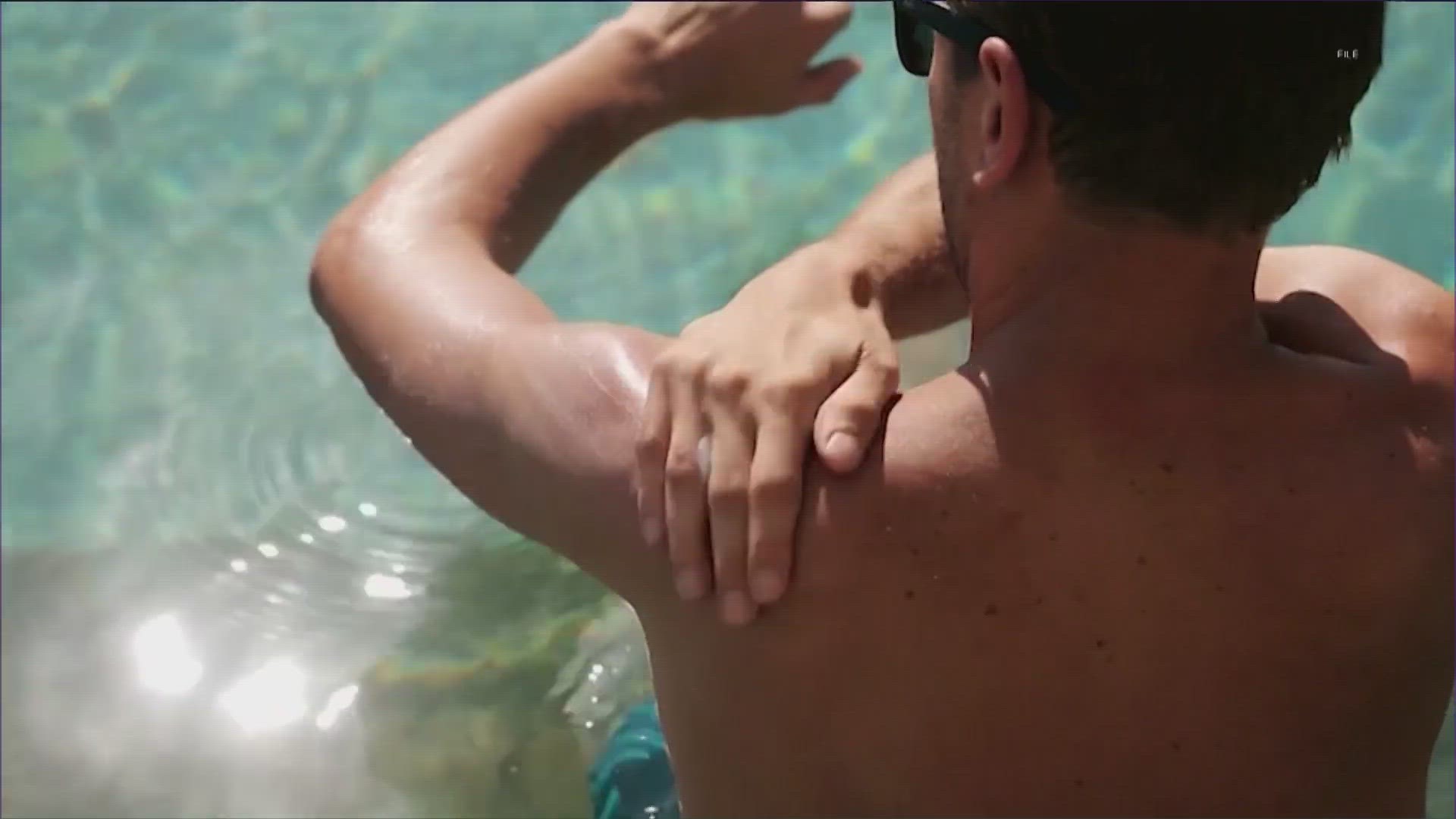AUSTIN, Texas — According to the American Cancer Society, skin cancer is the most common type of cancer. The older you are, the more likely you are to develop skin cancer.
“We all get a lot of sun exposure,” said Dr. Mammen Sam with the Texas Medical Association's committee on cancer. “That sun exposure is cumulative over our lifetime. Because the skin is exposed to sun constantly, it occurs damage over a lifetime, and we are more and more susceptible to skin cancer as we get older.”
With many teens and adults thinking of vacation this time of the year, some are hoping to achieve that “healthy” summer glow. So, we asked one expert if too much sun exposure is bad for you. Here are a few myths he was able to debunk.
Myth 1: A base tan protects the skin
People think they need to get a base tan to avoid getting a sunburn on vacation, so they get exposed to a minimal amount of sunlight to increase melanin in the skin. But does this “base tan” protect?
"We can't measure how much protection it confers," Sam said. “I don't think it confers enough protection to make much of a difference to change our recommendations.”
Myth 2: People with darker skin don’t need to worry about sunscreen
“I encourage all patients to wear sunblock,” Sam said.
However, if you’re a lighter skin person, he encourages it even more.
“The differences between light-skinned individuals and darker-skinned individuals is the amount of melanin in their skin,” he said. “The darker skin you have, the more melanin you produce. And melanin protects us from the damaging effects of ultraviolet radiation, UVA and UVB.”
But Sam affirms we are all at risk for skin cancer.
“There is a difference in where the skin cancer presents and where we agree that melanin does protect the skin from UVB damage,” he said. "But in darker-skinned people, they're more likely to develop skin cancers if they have significant sun exposure in the … palms of their hands or the soles of their feet."
The hands and palms of the feet are usually the lightest parts in a person’s body.
Sam reminds people to reapply sunscreen during the day. Also, try not to go outside when sun intensity is at its strongest, which is usually between 10 a.m. and 3 p.m.
Myth 3: Tanning is necessary for vitamin D
Tanning isn’t necessary for vitamin D. However, sun exposure is the most natural way to get enough vitamin D.
“For most people, 10 to 15 minutes of sun exposure would be good, maybe half an hour for darker skin,” Sam said.
He reminds people to avoid sun exposure during the hottest times of the day and suggests people wear clothing that covers their arms and legs as well as a wide-brimmed hat that covers your face, head, ears and neck.
"A sunscreen that is SPF 30 or higher that also blocks both UVA and UVB – generally speaking, we recommend mineral-based sunscreens and not the other chemicals," he said. "Mineral-based tend to be less harmful to the body."

